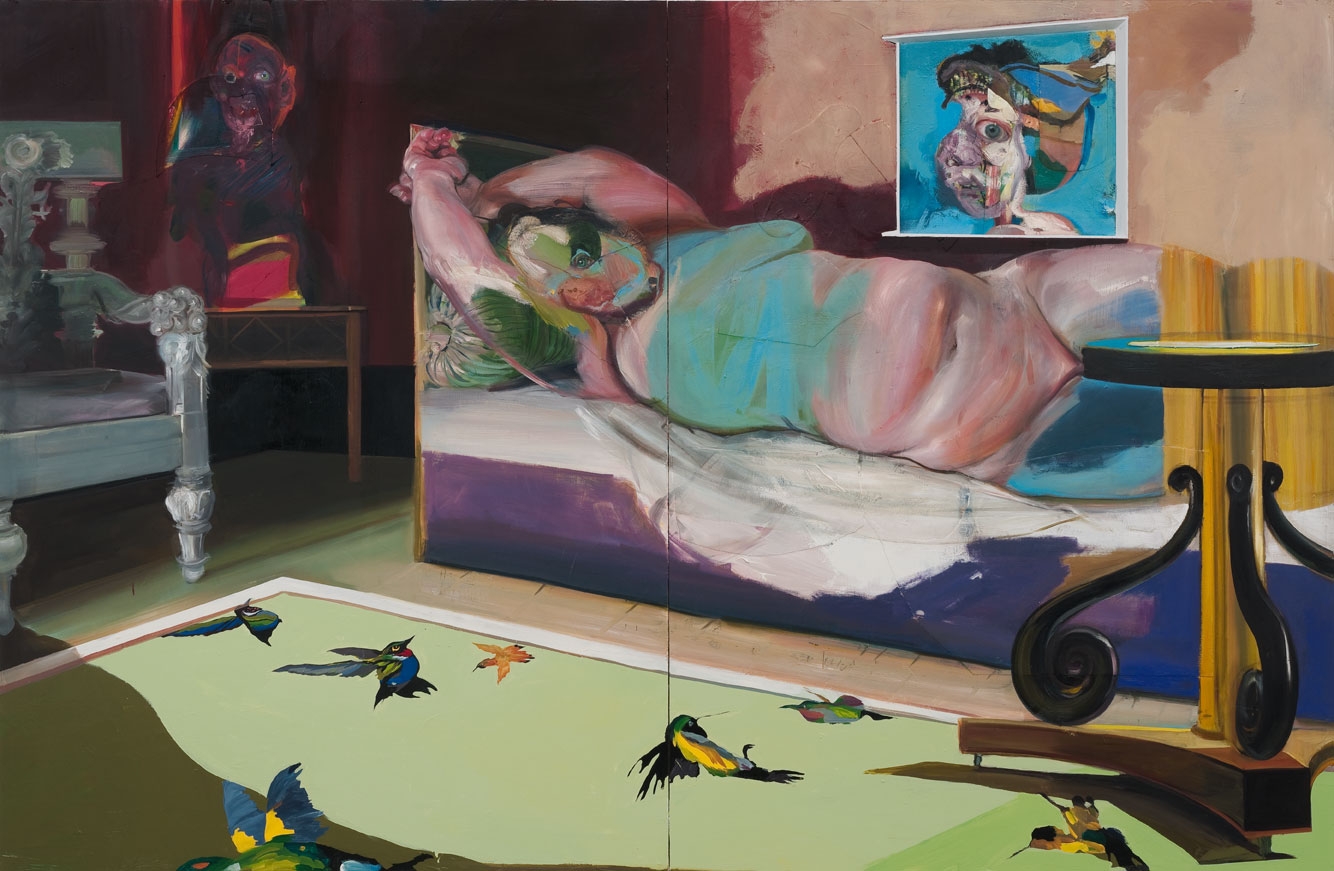Natalie Frank’s figures usually lie behind closed doors, in contracting spaces that dimensionally contort and spin under the duress of slow pressures. An essential stress spills out from every solid. The basic metaphor is of the collapsing spaces of the mind in the midst of trauma or on the frontiers of dreaming, when the most banal situations take on the weight of symbol. These are interior paintings. Literally and figuratively, the people inside them are pale and atrophied and held in a state of arrest. Little sun breaks through.
The news that Frank brings is both visually and topically resonant with late-nineteenth-century Symbolism. Riding a wave of new interest in the subconscious and the romantic revival of old myths, artists such as Odilon Redon, Gustave Moreau, and Fernand Khnopff pictured the mind quite poisoned by its new industrial reality. Whereas the Impressionists turned to physical reality, the Symbolists plunged into the imagination as shaped by narrative history. Very much in this spirit, Frank presents the subconscious as continuously fresh and horrifying, torturing her apparitions as they navigate terrains of archetypal totems.
Consider Portrait in Interior with Window (2013). A distended female body stretches on a bed, as though tied at the top, while an incubus lurks in the upper left corner. Ultimately, this is an update and refutation of Henry Fuseli’s The Nightmare (1781). Frank does not allow her dreaming subject fetishistic entry into the rubric of Fuseli’s male rape fantasy, but instead offers the viewer a potential empathetic moment with the woman in bed. The incubus is merely an opportunistic tormentor, while the potential hope in the window (a family member? a lover?) seems the true source of the trauma. The woman twists in ambivalence between happiness and pain, and the symbols of her release (birds) are trapped as a mere design motif on the floor.
That this interpretation reads as the sequence of a dream is no accident. Frank’s humans seem alienated from warm interactions with others, bound up in their own codes of acceptance. The dream is a great metaphor for this, an independent language created by the brain based on an unrepeatable set of conditions. Unlike, say, Neo Rauch, Frank’s dreams do not flirt with expansive historical allegory, but instead focus on flash encounters of feelings and moments of individual distress. Erotic energy only increases the fracture. Frank’s subjects experience their worst divisions when they encounter the sexual other.
It is poignant and important that these paintings emerge in a society obsessed with increased connectivity. Frank presents dark subtexts and layered narratives in an age dominated by soundbites and carefully constructed personas. These personas are patently false, Frank seems to suggest, while the reality of the mind is still as dark and hidden as it was for Redon and Khnopff. The fruits of decadence –for the Symbolists and now for Frank – are islands of disconnectedness and ennui where individuals are bombarded by images but lack the capacity for feeling and meaning.
This article was first published in the December 2013 issue.
